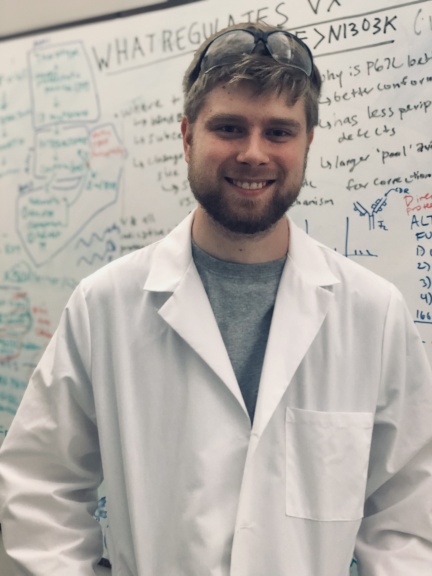The rise of antibiotic resistance constitutes a very real and growing global health threat. Between 2000 and 2020, only 24 new antibiotics were approved by the FDA, an alarming decrease from the 63 antibiotics approved in the preceding twenty years1. However, there is still hope for solutions to this crisis. In the November 5, 2020 episode, “Dirt Is Not Simple”, of the podcast series This Week in Microbiology, host Michael Schmidt discusses the possibility of a “second Golden Era of antibiotic discovery2.” This new era could stem from the newly appreciated biochemical diversity among Actinobacteria in the soil. Schmidt reviews the perspective article “Cryptic or Silent: The Known Unknowns, Unknown Knowns, and Unknown Unknowns of Secondary Metabolism” by Paul Hoskisson and Ryan Seipke3. Schmidt notes the authors’ optimism that the dawn of Next Generation Sequencing will allow for the identification of novel antibiotics from the largely untapped trove of natural products in the secondary metabolism of Streptomyces species in the soil-dwelling Actinobacteria phylum. Indeed, actinobacterial genome- mining has already uncovered biosynthetic gene clusters (BGCs) for over 11,000 previously unknown natural products4.
Schmidt utilizes most of his time highlighting antibiotics successfully isolated from Actinobacterial natural products in the past. Schmidt thereby contextualizes the magnitude of this research area’s potential. Clavulanic acid, spectinomycin, ivermectin, amphotericin, nystatin, and chloramphenicol, all now developed drugs, are derived from Actinobacterial species. Schmidt emphasizes the complex structures of these natural products, pointing to the difficulty of synthetically developing these drugs in a lab: “Any organic chemist would break out into a sweat just looking at the precursors for these compounds. There’s no way you could actually make that.” He dives deep on the mechanism of clavulanic acid as one of the more interesting drugs to come out of the Actinobacteria treasure chest. Clavulanic acid is not itself an antibiotic. Instead, it enhances b-lactam antibiotics, such as penicillin, by inhibiting b-lactamase, an enzyme secreted by many bacterial species to protect their populations from b-lactams. Once clavulanic acid inactivates b-lactamase, b-lactam antibiotics can kill bacteria by inhibiting the synthesis of peptidoglycan, a key structural component of bacterial cell walls5. By noting the efficacy of just one such natural product isolated from Actinobacteria, Schmidt is effective in conveying wonder and excitement for the possibilities that could await in the 11,000 and growing natural products implied in the genomes of 830 Actinobacterial species.
Schmidt finishes by acknowledging the enormous effort and manpower that will be required to translate the potential offered by Actinobacteria biochemical diversity into safe and effective antibiotics. Sequencing and computational methods uncovered the thousands of novel natural products, but the challenge remains for these compounds to be isolated, characterized, and analyzed for their potential as new antibiotics. Indeed, Hoskisson and Seipke admit that with such a wealth of data, even “prioritizing which BGCs to study presents a challenge in the field.” Numerous dedicated researchers will be needed to elucidate the properties of the Actinobacterial natural products. However, it is heartening to hear that a crisis as menacing as antibacterial resistance might be solved with nothing more than a handful of dirt and some hard work.
References
1. Conly, J. M. & Johnston, B. L. Where are all the new antibiotics? The new antibiotic paradox. Canadian Journal of Infectious Diseases and Medical Microbiology (2005) doi:10.1155/2005/892058.
2. Schmidt, M., Swanson, M., & Racaniello, V. (2020). Dirt is not simple (No. 229). https://www.asm.org/Podcasts/TWiM/Episodes/Dirt-is-not-simple-TWiM-229
3. Hoskisson, P. A. & Seipke, R. F. Cryptic or silent? The known unknowns, unknown knowns, and unknown unknowns of secondary metabolism. MBio (2020) doi:10.1128/mBio.02642-20.
4. Doroghazi, J. R. et al. Aroadmap for natural product discovery based on large-scale genomics and metabolomics. Nat. Chem. Biol. (2014) doi:10.1038/nCHeMBIO.1659.
5. Reading, C. & Cole, M. Clavulanic acid: a beta lactamase inhibiting beta lactam from Streptomyces clavuligerus. Antimicrob. Agents Chemother. (1977) doi:10.1128/AAC.11.5.852.
